According to Virtana’s recent State of Hybrid Cloud Storage survey, most organizations have a little over half of their storage in the cloud, keeping the rest on premises.
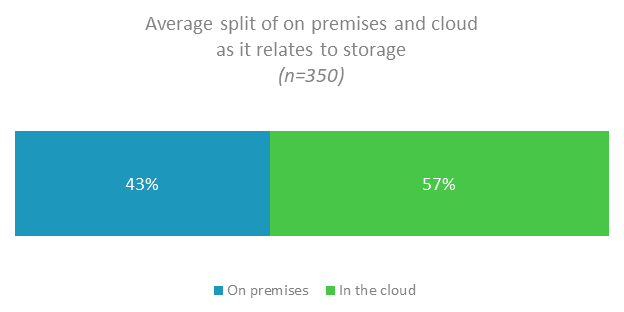
But how are they deciding what storage goes where? Is there such a thing as a wrong—or even just sub-optimal—storage placement decision? We dug into the data to answer these questions.
Hybrid is the storage approach of choice
Philosophically speaking, most organizations want storage both in the cloud and on premises. Over half (55%) favor the cloud but will keep storage on premises when there is a cost and/or performance advantage in doing so. Only 32% of respondents insist on one environment exclusively, but of that cohort, 91% (29% of the overall group) said they want all their storage in the cloud.
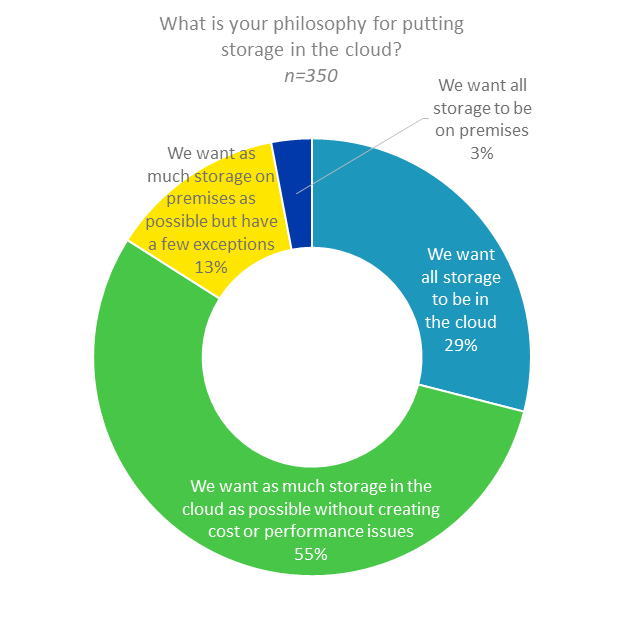
Of course, desire doesn’t always match reality. While 3% of respondents said they want all their storage to be on premises, zero reported this being the case. In fact, only 1% said they have more than 90% of their storage on premises. The difference is even starker for those with a cloud-only storage mindset. While that group represents 29% of all respondents, only 0.3% said that 100% of their storage is in the cloud, and a mere 1% reported that more than 90% of their storage is in the cloud.
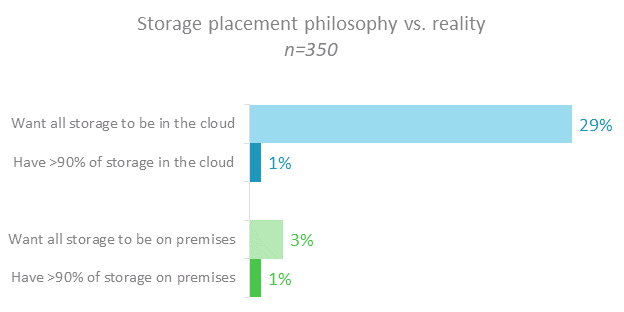
The lesson here is that storage placement is an ongoing concern, even for companies that have “pre-decided” that storage should ideally be placed in a particular environment.
How to make smarter hybrid cloud storage decisions
There’s no prevailing approach organizations use to make storage placement decisions. The good news is that only 3% of respondents have to resort to simply making a best guess. The remaining 97% are pretty evenly split between relying on their team’s knowledge and expertise (33%), using automated third-party tools (33%), and taking recommendations from their CSP (31%).
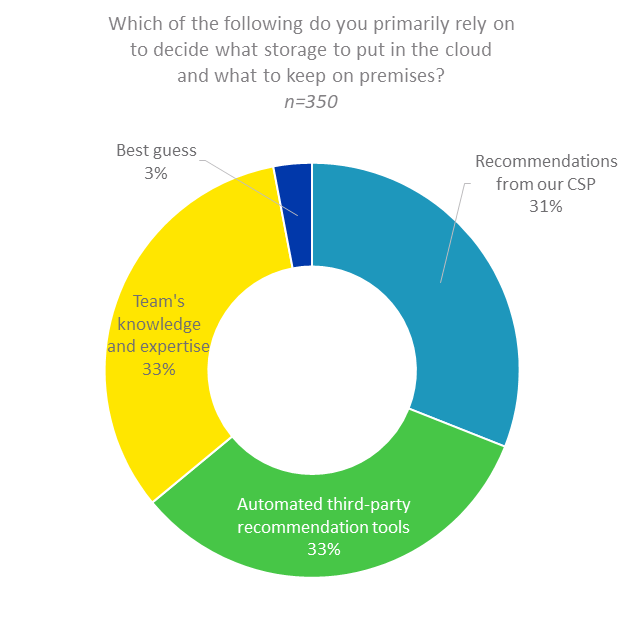
What are the implications of the various methods for making storage placement decisions? Cost is only one dimension in the equation, but given the size of cloud storage spend, it is an important one. It turns out that respondents who rely primarily on their CSP for storage placement decisions are more likely to see their storage costs grow at a faster rate—63% vs. 45–54% of those using other approaches. And while very few organizations have storage costs that are matching the rate of increase of their overall cloud spend (only 5% of the total respondent pool), they are more likely to use automated third-party tools than the other methods.
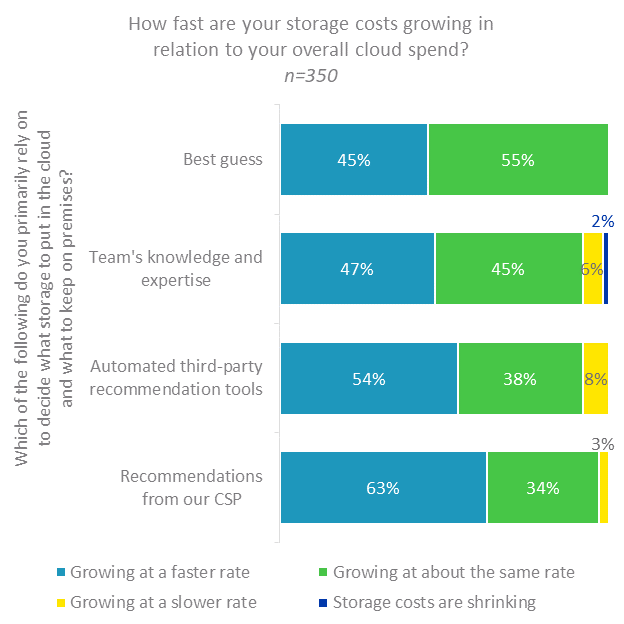
This data raises some questions. First, how can we account for the fact that, while expertise and knowledge have allowed a small number of respondents to keep their storage costs in check—growing at a slower rate or even shrinking—the best-guessers seem to be doing a little better at keeping storage cost growth at the same rate as other cloud costs (55% vs. 45%). Is it possible that some in the “knowledge and expertise” group are overstating their know-how and others in the “best guess” group are understating it? Second, and most strikingly, why are companies making CSP-driven storage placement decisions far more likely to see their storage costs grow faster than other cloud costs? CSPs do have a stake in those decisions, but we’re not suggesting anything nefarious is going on with those recommendations. While they will help direct you to the best options within those environments, there may still be better choices when you look across the entire hybrid infrastructure. We can’t fault the CSPs for their provider-centric view—it would be unrealistic to expect otherwise. And this doesn’t mean that you can’t use those recommendations, rather that CSP recommendations shouldn’t be your only decision inputs.
Having a knowledgeable and experienced team is always valuable and can help you make informed cross-environment decisions, but it may not be possible to have all the expertise you need consistently on staff. Automated third-party recommendation tools fill the gap, providing a hybrid-infrastructure-wide view and what-if scenarios so your teams, no matter their size and makeup, can always identify and evaluate best-fit storage placement options.
Virtana knows hybrid infrastructures—and storage
From our heritage monitoring big-iron SAN infrastructures through our evolution into infrastructure performance monitoring and hybrid cloud performance, cost, and capacity management, Virtana brings unmatched storage expertise to all our Virtana Platform products, giving you the data not just to make smarter storage placement decisions but to effectively manage your entire IT infrastructure across on-premises and cloud deployments. Try Virtana for yourself
Get the survey report: The State of Hybrid Cloud Storage
Manage performance, cost, and capacity and take action based on full-spectrum insights: Try Virtana Platform for free

Jon Cyr
VP of Product Management, Virtana




